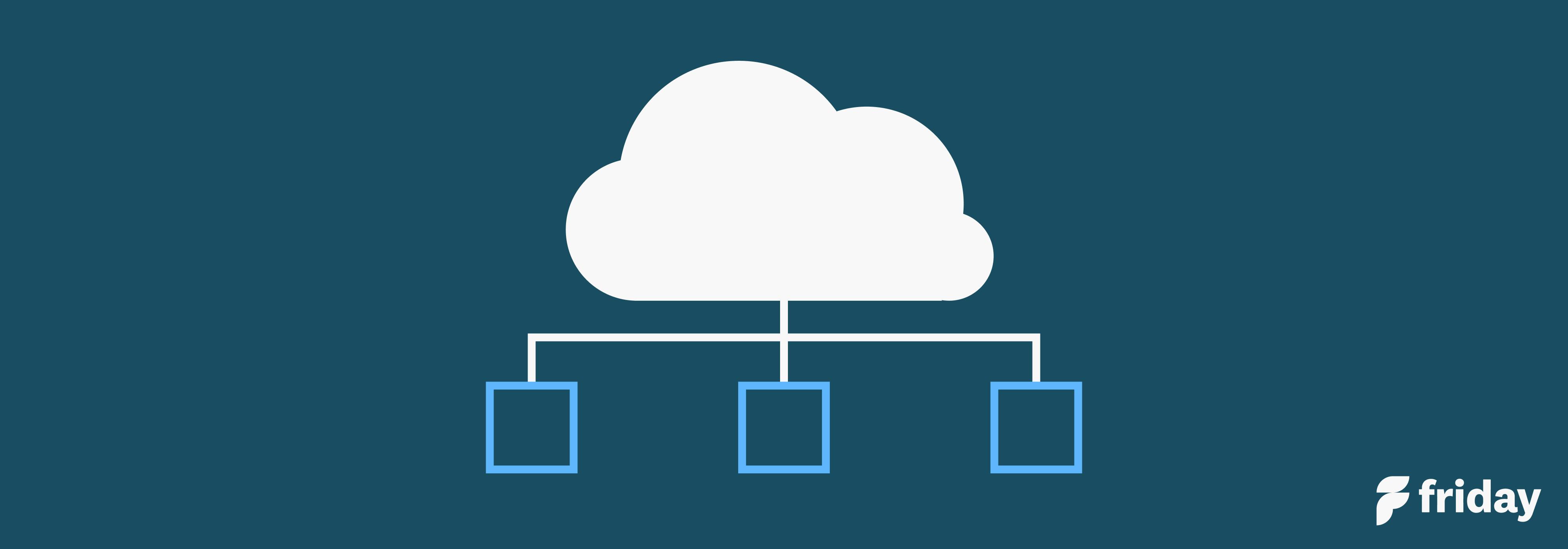The Modern Intranet May Not Look Like An Intranet At All

If you’re reading this article and work at a large company, chances are you have some familiarity with an intranet.
You may even be using more than one at work.
But, if you're like most people, you probably don't use your company's intranet too often. Instead, it’s like a junk drawer--you only go there when you have to and it’s a holding area for the things no one at your company knows what to do with.
Is there a way to make intranets better?
The History of Intranets: Nothing Has Really Changed
Traditional intranets have been around for decades, but their purpose hasn't changed much over time. They were designed to provide information about company policies, processes and procedures.
Back then, intranets were primarily used by large organizations to share information between departments. They were often built using customized systems or something like Lotus Notes (ask your dad about it). They contained information about job openings, training courses, company news and other employee-related data.
Today, however, the intranet is used by many different people for different purposes. Employees use them for work-related tasks such as accessing files, collaborating on projects or searching for answers to questions. Managers use them to communicate important news and share documents with team members. HR uses them to manage employee benefits. Marketing uses them to promote products and services. It's not unusual for an intranet to contain hundreds of pages of content.
This makes it difficult to navigate and use effectively.
Characteristics of the traditional intranet
- Company news and announcements
- IT-heavy resources and information
- Outbound links to HR, payroll and expense reporting
- Static place that no one visits with forgotten log-ins
But the truth is that modernizing the intranet is just one piece of the puzzle, because meeting the needs of today's workforce requires modernizing the entire digital employee experience.
How can you ensure that all employees will be able to access the information they need quickly and easily? What changes should you make to improve the overall user experience so that intranets become something employees want to use?
The Modern Intranet Is The Glue for Your Company
A modern intranet is the glue for your most important things at work. It’s a place that employees actually find valuable for their everyday use, instead of it being a forgotten junk drawer.
It’s for vital information, not leftovers. To that end, a meaningful, modern intranet should help employees answer these 4 questions:
- What are people working on?
- Who do I work with?
- Why does my work matter?
- How does my work connect to a bigger purpose?
The modern intranet is a place of vital information, that is updated regularly, with the most important things at work.
The Modern Intranet Is Async First
70% of the world’s workforce is working remotely at least once a week and 82% of U.S. businesses are allowing their employees to work remotely as a way to improve work-life balance.
Organizations need internal communication software that have adapted to the remote and hybrid reality.
While the older intranets required a steep learning curve and a lot of hours put in by your IT department, the newer ones are user friendly and tackle modern business challenges with ease. They are nimble, and less cumbersome to set up.

Check out what some of the best companies have done to master this new mode of remote and distributed work, especially in a post-COVID world. They’ve invested in their own internal tools because traditional intranets haven’t cut it.
- Stripe has Home
- Zapier has Async
- Shopify has Vault
- Gitlab has their handbook/wiki product
- Automattic has P2
These organizations have created an asynchronous home for the most important stuff at work.
They are not...
- New workplace chat tool with endless notifications.
- Virtual offices like a video game
- They’re not project management tools (there are already enough of those)
Instead, they have asynchronous remote operating systems to share regular updates, shout-outs, progress on goals, and learn a bit more about the people that you work with...a modern intranet if you will.
The Features of Modern Intranet To Enhance Remote Work
They haven’t adopted SharePoint or another intranet software, because they’re not built for the remote age. Instead, they’ve been forced to build their own tools--ones that incorporate these features that revisit the four questions that we mentioned earlier.
- What are people working on? Team check-ins solve this. You can do daily stand-ups, weekly check-ins, weekly/monthly one-on-ones or a combination of those in both async and synchronous formats. Friday empowers you to do this in a simple question and answer format.
- Who do I work with? The employee directory solves this. People need to know who they work with, where they live (or where they’re working from) their interests, and what they’re working on. Much of this information was captured in the office with simple get-to-know you meetings or an introductory lunch. In an async workplace, you need a different method to capture and store this information.
- Why does my work matter? Goals solve this. Set goals and then track progress right inside Friday. Your Goals can be updated from the Friday homepage or within a routine.
- How does my work connect to a bigger purpose? The company handbook solves this. List your values and your most important onboarding information right inside Friday. Most people use their intranet or wiki for this, but the employees never see it or are never reminded of it. Because Friday is a living, breathing place for your employees, it’s easy to see and refer back to.
- What brings it together? The Friday Planner. To solve the goals of an intranet, too many tools fall short. The Friday planner serves as the glue for each individual’s most important things at work. It offers a daily schedule plus task integrations to provide a focused place for each day. The Friday Planner connects with calendars, task management apps, and online video tools to help employees collaborate and focus on the work at hand. Set individual details within the task management system, set up meetings in Google Calendar or Outlook, and bring it together with Friday.
Friday as Your Company Home & Modern Intranet
If the traditional intranet is just static pages with forgotten logins, the modern intranet is the centralized hub that glues your work together.
The modern intranet:
- Helps each individual employee plan their day
- Provides team check-ins
- Aligns employees to bigger goals
- Creates connections
- Creates context at scale (not dependent on office drop-ins)
The modern intranet is the glue of the digital workplace, re-imagining internal communications for employees with an updated experience.
It may not look like an intranet at all. Instead, it's your company home for the most important things at work. Check out our suggestions for buying an intranet in this guide.
- Digital HQ that centralizes your most important work in one place.
- Modern and clean UX.
- The only intranet purpose-built to complement Slack and work chat.
- Posts make it easy to share company-wide announcements and see who viewed them.
- Team profiles and employee directory to get to know coworkers.
- Add-ons make Friday simple at first, yet extendable over time.
- Integrates with all systems of record, like HRIS, Project management, and work chat.
- Goal/OKR tracking, perfect for executive buy-in.
- Company handbook for onboarding new hires in minutes vs. hours.
- Use no-code widgets to build out your company home in a few minutes instead of months!
Pricing:
- Individual Pro: $4 per month. Perfect for individuals who want to see how Friday works
- Teams: $6/per person /month. An offering for teams who want to use Friday as a small group
- Company/Enterprise: For entire organizations who want to create a customizable company home.
Use Friday for free. No credit card required. Try all the features for the first 2 weeks.


